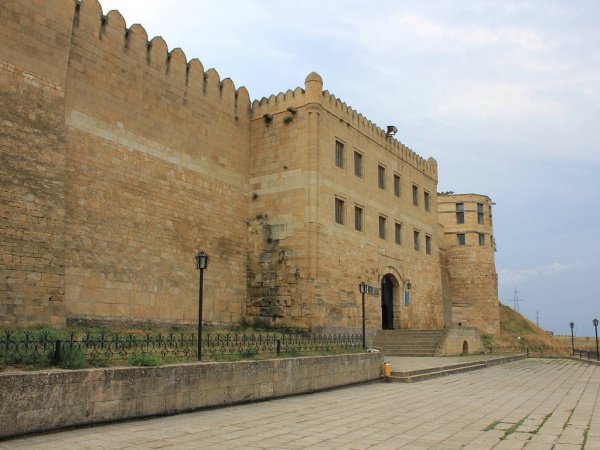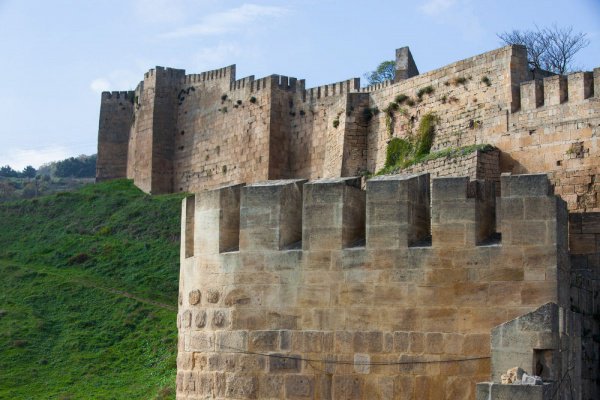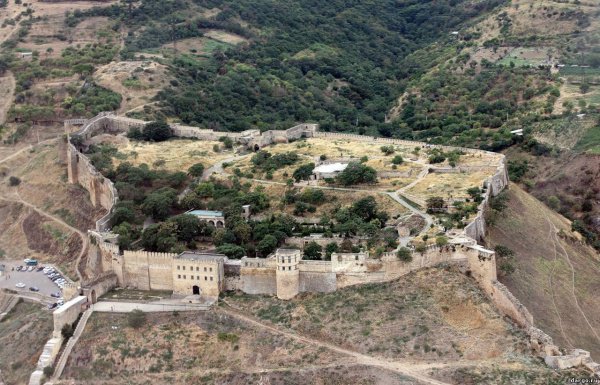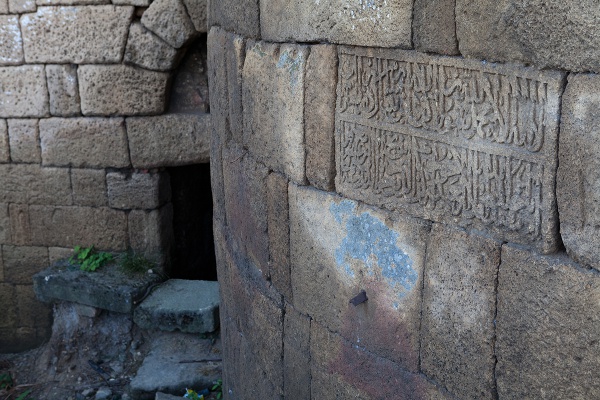The ancient fortress in Russia, which is known as Naryn-Kala Fortress, is located in the city of Derbent, the Republic of Dagestan. Being the most powerful stronghold in the entire North Caucasus, the fortress was founded in the 6th century by Persians. At that period of time the city was ruled by the Sasanian Empire. There are a lot of interpretations of what the name Naryn-Kala means. The most popular opinion is that Naryn-Kala means “solar fortress” in translation from the Turkic languages.
It is known that at the beginning of the 18th century Dimitrie Cantemir, who accompanied Peter the Great during the Persian Campaign across the Caspian Sea, (summer of the year 1722), admiringly described that cult monument in his diaries from the words of Derbent inhabitants.
The Naryn-Kala Fortress is a part of the huge fortification system of Dagh-Bary (“Mountain Wall” in English), which comprises a wall 40 km long, stretching from the coast to the very foot of the mountains. The Dagh-Bary fortification served to protect Western Asia and Transcaucasia from northern nomads.

There is an opinion that seven times more materials were spent on the construction of Dagh-Bary than on the construction of the Great Pyramid in Giza. According to the legend, 10 000 warriors, 6 000 craftsmen and 300 architects worked hard to create such a powerful and unique complex. The Persian Shahanshah (literally “King of Kings”), Khosrow I, personally observed the construction of the fortress in Derbent.
Anyway, the conquerors came to those lands from the completely different side. In the 8th century Derbent was conquered by the Umayyad Caliphate. The Arabs highly appreciated that perfect strategic location of the Naryn-Kala Fortress and its importance for the spread of Islam within the territory of the North Caucasus.

It was a powerful citadel with walls up to 3m thick and about 20m high. During its existence, the Naryn-Kala Fortress survived turbulent periods of time, including the change of power in the region, devastating invasions of Seljuks and Amir Temur and managed to resist. The other parts of the Dag-Bary fortification were completely ruined.
In the 17th-19th centuries that region became a bone of contention between the two empires – the Russian and the Persian. In 1813 after prolonged wars, Derbent and the Naryn-Kala Fortress became the part of Russia.

Let us take a closer look at the Naryn-Kala Fortress, each component of which is one of a kind. Thus, on the territory of Naryn-Kala one can find the ancient underground Christian Church of the 4th century. The Arabs used it as a reservoir for water storage that helped the fortress to survive a vast number of sieges. Remains of luxurious palaces and noble residences indicate the high standard of living and comfort among the inhabitants of the Naryn-Kala Fortress.

But the most important and significant attraction of the Naryn-Kala Fortress are “the Day of Judgment Gates”, remains of a sacred Islamic place for performing Sufi rituals. They were laid in the 10th century from the city side that resulted in the formation of a small space, fenced from the outside. In 2004 archeologists found out that more than for a thousand years that place was considered as a portal opening the way to the otherworld.
According to scientists, the uniqueness of the object is in the fact that this monument, which began to function almost a thousand years ago, has no analogues in the Muslim World. Nowadays, this architectural and landscape object is protected by the state as a UNESCO World Heritage Site.
Ilmira Gafiyatullina
